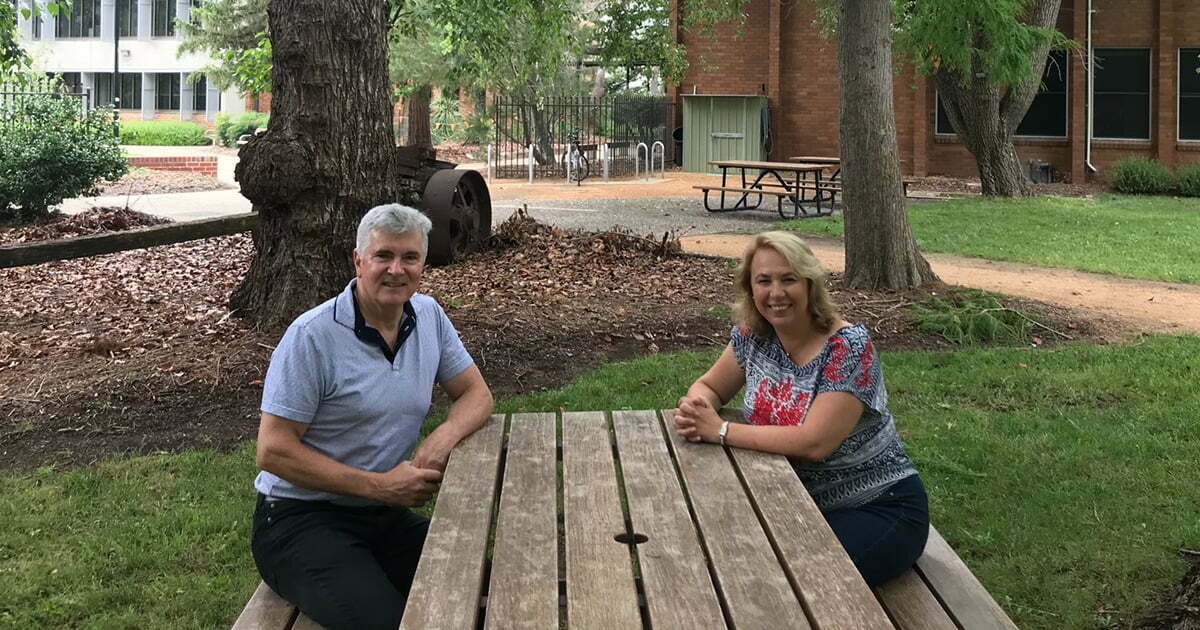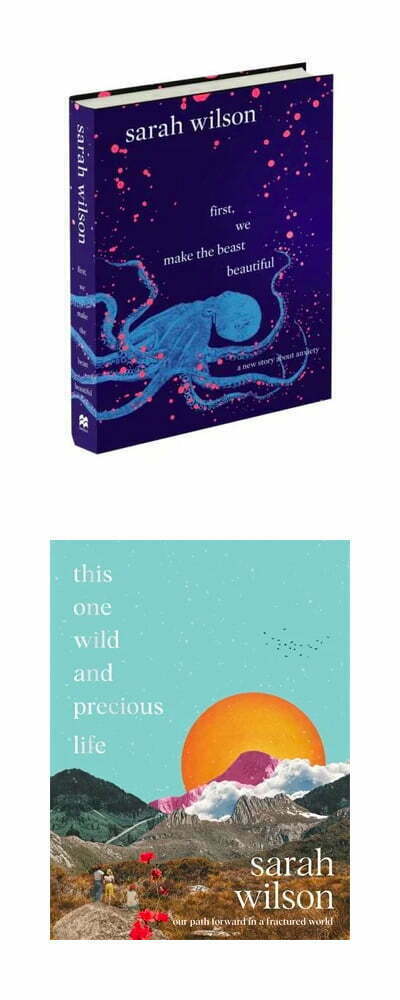ARRC NEWSLETTER – FEBRUARY 2021 EDITION
Ripples of hope
![]()
ARRC NEWSLETTER – FEBRUARY 2021 EDITION
![]()
Hello friends,
Firstly a big thank you to Pat, Kate and Masha for producing our January newsletter while I was kayaking on Tuross Lake! It has been so great to have the ARRC in a position where we can expand our team, and this week we welcome Matt Morrison, who is helping us with business design and strategy. Matt is assisting us as we focus our efforts and energies on creating ‘ripples’ of hope, action and belief in the power of individuals and groups to respond to our changing climate. We want to raise awareness about how vital rivers and ‘wet’ areas are in a drying climate – caring for these areas enables micro-climates to be created that protect wildlife, stock, crops, and people from extreme events – while at the same time restoring riparian biodiversity.
Our Conversation over a Cuppa podcast with Professor Mark Howden gets this conversation going, and we encourage you to have a listen and join our Climate Conversations Linked In Group. We also have some practical new guides for you to explore, as well as a the new ‘Mesocosm Dance’ to learn! Finally, we leave you with Sarah Wilson who is calling for us all to reconnect with ourselves, each other and nature, to respond and adapt to our changing climate. That is certainly what we are trying to do here at the ARRC and we thank you for being part of our community.
Enjoy.
Siwan 🙂

Matt joins the team as an experienced digital leader to help us continue to deliver engaging web and social media experiences. He will also be helping us with strategy, planning and seeking out new opportunities. We’re excited to have Matt’s innovative and energetic presence on the team!
ARRC – CONVERSATION OVER A CUPPA PODCAST
In this episode, Siwan talks with Professor Mark Howden about how we can retain hope in the face of a changing climate. Mark is the Director of the Institute for Climate, Energy and Disaster Solutions at the Australian National University, as well as being the Vice-Chair of the Intergovernmental Panel on Climate Change (IPCC). As a global expert on climate science, his work over the last thirty years has explored climate variability, change and adaptation. In this conversation Mark and Siwan discuss how we can look to each other for the skills and hope we need to adapt to our changing climate.
If you are interested in taking these ‘climate conversations’ further, please join our LinkedIn Group, along with Mark and Siwan.

RIVERS OF CARBON – RIPARIAN REAL ESTATE GUIDE SERIES
There are a large variety of birds that use and live around waterways. The nature of your riparian zone will determine what species of birds are attracted to it, with different birds requiring different types of habitat. Reeds, deep water, dead trees, sandy banks, mud flats, still pools, swampy meadows, rocks, complex vegetation structure, dense shrubby vegetation and open woodland, are all examples of different waterway environments that attract different bird types. Working out what type of waterway habitat you have on your place will enable you to identify the birds you can expect to visit and possibly ‘move in’.
In conjunction with Greening Australia, this is a guide to assist in improving the abundance of birds on your riparian ‘real estate’. Birds are excellent short and long-term ‘tenants’ – they improve plant pollination, seed dispersal, increase the abundance of water plants, and control insects. They are also beautiful, with their colour, movement and song making riparian areas special places to be.

FLOW – MONITORING, EVALUATION AND RESEARCH PROGRAM
Flows and flooding provide food and sustain life in river and wetland ecosystems. Inundating a wetland helps plants grow by wetting dry areas and creating habitat and places for algae to flourish. Flows bring organic matter into rivers fuelling microbes and small zooplankton growth. They allow fish to move, forage and spawn, as well as helping insects grow which, in turn, enables birds to forage and boom. Our work in monitoring environmental responses at monthly, yearly, and decadal time scales, have shown that flows are central to the life-giving food webs in the Murray-Darling Basin.
Understanding and predicting the precise nature of how these organisms and their interactions change following environmental flows still remains tricky. To help unravel the complexities of how ecosystems respond to environmental flows the Flow-MER Food Web and Water Quality theme is conducting a series of experimental studies at the University of Canberra’s purpose built E2R mesocosm facility. Watch the video to view the ‘mesocosm dance’ and then click below to read the full article.
RIVERS OF CARBON

A study in March 2020, conducted by Monash University’s BehaviourWorks, on behalf of the Victorian Department of Environment, Land, Water and Planning , investigated the attitudes and beliefs of landholders in the Goulburn Broken Catchment Region towards restoring and fencing riparian areas to restrict stock access to waterways. The study interviewed 10 current participants of the Catchment Management Authority’s fencing program, and 10 non-participant in the program. Although a small sample, we thought what they found would be useful for anyone working in riparian management.
On 4th December 2020, we held a Roads and Tracks Field Day to help track-owners understand more about creating tracks that withstand erosion. Click on the photo below to go through a gallery of images from the day. We were fortunate to have Peter Fogarty and Ashley Bolton sharing their expertise as we walked around a property owned by Icon Water. You will notice that we spent a lot of time looking at our feet – or rather the track, soil, slope, runoff and erosion threats.
FINTEREST
Irrigation is essential for Australia’s economy, providing water to our agricultural sector and urban centres. Since 1929, it has been recommended that irrigators install screens to prevent fish and debris from being diverted into irrigation channels (Register News-Pictorial, 1929). Some irrigators have responded to these calls, however, many screens are ineffective, and actually end up blocking the irrigation system.
The good news is that a new fish screen technology, that can now be manufactured in Australia, has been developed by Fish Screens Australia, an organisation based at Cohuna, an irrigation town on the Victorian-NSW border. This fish screen prevents fish from entrainment, impingement and predation in diversion pools, rivers and channels. It has minimal impact on water intake, and is self-cleaning to prevent debris build up.
INSPIRATION
 I have just finished reading Sarah Wilson’s book this ‘One Wild and Precious Life’. and I know that along with her previous book about anxiety, ‘First we make the beast beautiful’, I will read it again and again. Sarah talks about her feelings of despair, anxiety and rage at the lack of action on climate change, and how this compelled her to write a book that reaches the conclusion that this sense of despair and disconnection is ironically what will unites us – that deep down, we are all feeling that same itch for a new way of living.
I have just finished reading Sarah Wilson’s book this ‘One Wild and Precious Life’. and I know that along with her previous book about anxiety, ‘First we make the beast beautiful’, I will read it again and again. Sarah talks about her feelings of despair, anxiety and rage at the lack of action on climate change, and how this compelled her to write a book that reaches the conclusion that this sense of despair and disconnection is ironically what will unites us – that deep down, we are all feeling that same itch for a new way of living.
I have chosen a short video of a conversation Sarah had as part of the Wellness at Work summit in September 2020. I feel that in this discussion she touches on all the key parts of both books, and frames it in the context of our workplaces and daily lives. She talks about being alone vs loneliness, the importance of human conneciton, how we can create certainty anchors to deal with our uncertain world, and the benefits of walking in nature so that we can have time for ‘discerning undistracted thought’.
PLEASE CONSIDER MAKING A DONATION GIFT TO KEEP US DOING WHAT WE DO BEST
Have you enjoyed reading our newsletter and watching the videos we have provided? If so, you might like to give us a donation that reflects what you feel this newsletter means to you. We rely on donations to keep sharing knowledge and staying in touch. As a registered charity recognised under the ACNC, we report to them every year about the contributions people have made in the form of donations. When you donate we can demonstrate that we are valued, and that people are willing to support to us so we can continue to build future resources for you and others alike.
Or send your donation via Direct Transfer:
Westpac Bank
ARRC Public Fund
BSB: 032-730
Account: 198844
If using direct transfer please have as the reference your name & date of donation. I can send you a receipt if required, just email enquiries@arrc.com.au with the details of your donation. Thank you 🙂
